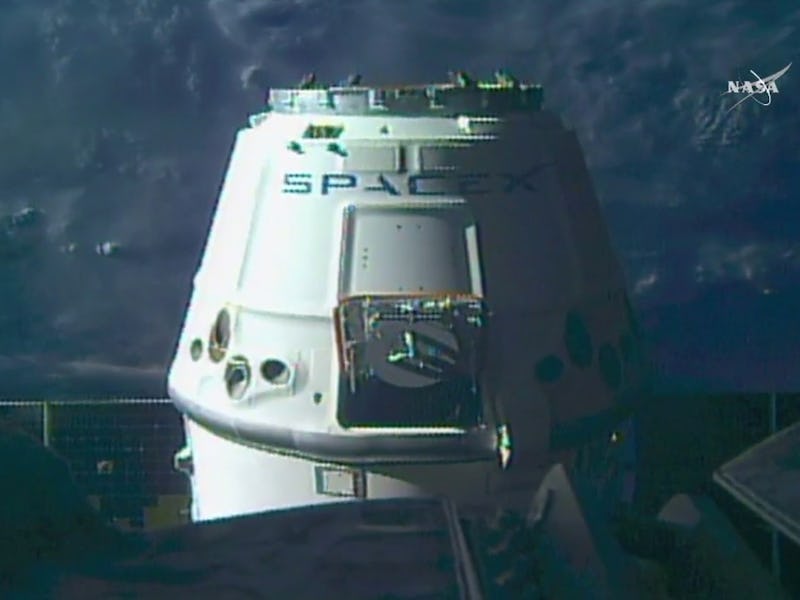After hitting a technical snag the day before, SpaceX finally managed to get its Dragon spacecraft to the International Space Station, making the latest ISS commercial resupply mission a success. The capsule was tasked with delivering 5,489 pounds of cargo to the space station — everything from day-to-day items for the astronauts onboard, to scientific equipment important to ongoing and new research investigations.
NASA confirmed the ISS had captured Dragon at 5.44 a.m. EST on Thursday morning.
Both NASA and SpaceX initially hoped to have Dragon rendezvous with the ISS on Wednesday, but a problem with the spacecraft’s GPS made the process problematic. The two-day journey to the ISS, which began after an epic Falcon 9 rocket launch on Sunday morning from the historic LC-39A launchpad at Kennedy Space Center in Florida and included a wicked first stage booster landing (as is SpaceX’s style these days), was forced to extend its free time in orbit by another day.
The cargo delivered by the spacecraft will be used in around 250 science experiments, as part of the CRS-10 mission. Many of the experiments, which will be carried out during expeditions 50 and 51, will focus on human health, weather patterns, and Earth science.
The heaviest piece of cargo, a 2,166-pound lightning image sensor, will be used to capture the flashes on Earth to better understand weather patterns and climate change. It’s estimated that lightning flashes around 45 times per second on Earth, so the sensor will have plenty of work in its mission.
The cargo also included a number of furry friends. Twenty mice will be used part of the Tissue Regeneration-Bone Defect (Rodent Research-4) study, aimed at finding out more about what stops humans and other animals from regrowing limbs in a similar process to salamanders. The experiment is aimed at seeing whether “reduced gravity induces cell proliferation and propagation.”
Once the capsule is unpacked, which is expected to take around four weeks, the Dragon will be sent on a five and a half hour return mission, landing off the coast of Baja California in the Pacific Ocean.
